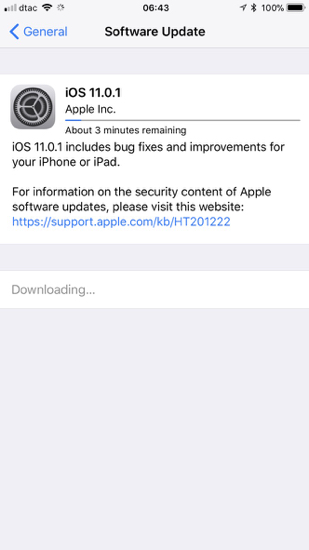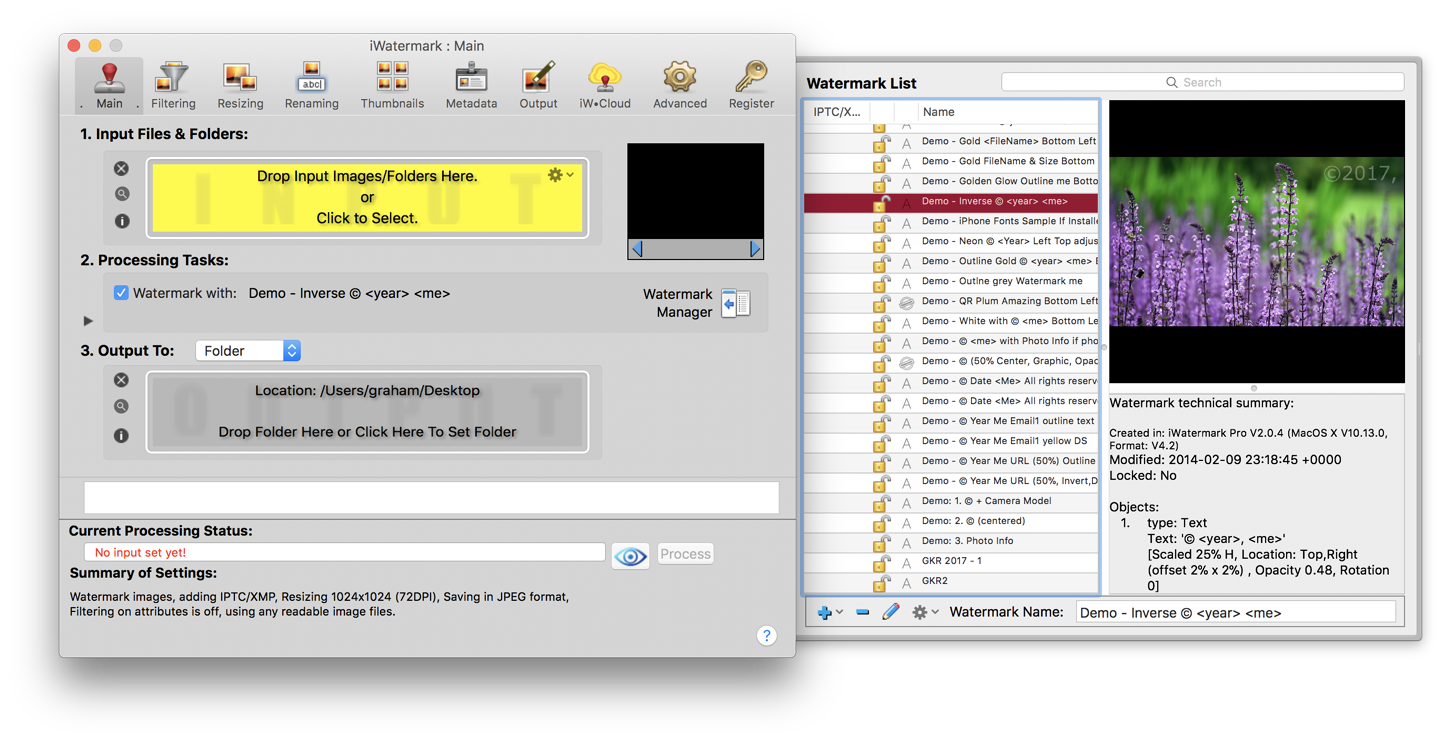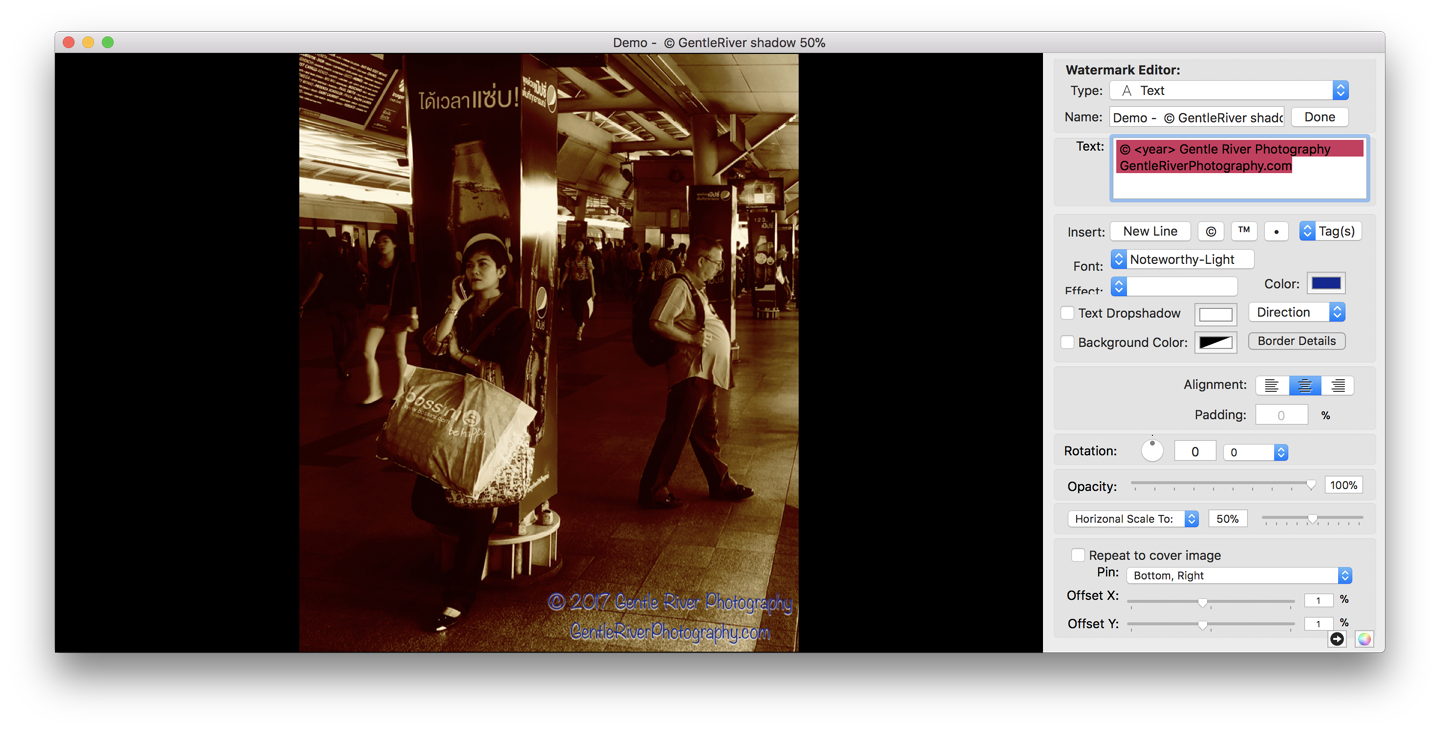eXtensions - The Wednesday File (24): Protecting Our Images - iWatermark Pro

eXtensions - Wednesday 27 September 2017
|
eXtensions - The Wednesday File (24): Protecting Our Images - iWatermark Pro |
 |
|
|
By Graham K. Rogers
Extra Notes An update to the new iOS 11 has been released to deal with some unspecified fixes. Comments I have seen online suggest that one oif these concerns battery life.
An update to the new iOS 11 has been released to deal with some unspecified fixes. Comments I have seen online suggest that one oif these concerns battery life.
Another note on Seeking Alpha cites the trustworthy Horace Dediu who claims that the Apple Watch sold $4.9 billion lin the past year. Not bad from what is - according to many on Wall Street, and especially Seeking Alpha, a failing product from a doomed company.
Protecting our Images and WatermarkingOver the last 20 years there has been a great democratization of photography. Since the arrival of digital cameras - initially expensive, but with clear potential - taking photos has become increasingly popular. People always did take photographs, but the slow processes of developing and printing the films had an output far smaller than what we see today. Now everyone is taking photographs with quite cheap (and not so cheap) smartphones, and professional photographers are concerned. In a post on Petapixel earlier this month, Jayphen Simpson outlines the video comments of Brendan van Son who expressed frustration with influx of new photographers who are crowding locations and behaving impolitely towards others.Many of those pictures taken by smartphone users - and probably destined for social networking sites - may not be good, but each is the work of an individual. A good photograph needs the right light (exposure, aperture, time) and a properly framed subject. Smartphone software helps with the light, but not with a bad picture. Post-processing can help if the subject is good and in focus. Even Ansell Adams was careful with this, adjusting light levels when printing from negatives (dodge and burn); and I do wish more people would correct white balance in their work, even if it is only to appear on Facebook. In simple terms there are three types of photographer: the professional; the enthusiastic amateur, ranging from the lecturing pedantic to those who instinctively understand the medium; and those who snap what is in front of them. Once in a while, those of us at the lower end of the talent spectrum will produce a good (or even great) image.
Photographs from DSLR and iPhone
Occasionally, I will watermark a photograph, although I am reluctant to spoil an image by putting text or an icon across it. However, these days, if I am considering doing this, I will use iWatermark, either on a Mac or an iOS device. There are also versions for Android and Windows. Recently, Plum Amazing updated the Mac version of iWatermark Pro to version 2 (2.0.4). Users are able to apply watermarks and other identifying data to photographs and video output. There are enough options to please even me on one of my most picky days. The interface is a little dated, but this is not necessarily a negative: after some updates, an app has to be relearned. Nonetheless, iWatermark Pro does need a little time to learn initially, although the end result from this is satisfying. All I have to do now is select an image and press the Process button. There are a number of ways that the input and output results can be fine-tuned: the wide range of options that the app provides can offer solutions for everyone.

To the right of the Input is a thumbnail of a selected image. Below that is a small icon marked Watermark Manager: this tiny doorway is one of the keys to the app. This reveals a list of Demo watermarks (each can be selected and tested with an image). Double-clicking on a watermark brings up a panel that allows the user to edit that specific watermark. These include text or graphic icons and a signature among other options.

That setting up needs only doing once, until circumstances change (like the year for copyright), although some users may have more specific output needs, depending if a client is involved. It is not a lengthy process to change any of the output (or input) settings, and once this has been done a couple of times, despite the variety of options possible, this is not a difficult job. Even creating a new watermark in the Editor, for a specific job takes only a minute or two, although I tend to keep the same watermarks, just adjusting minor details (such as watermark position) depending on the photograph. I do have a plugin from iWatermark that works in Aperture, but there is no equivalent extension for Apple Photos, which might add to efficiency. As iWatermark is not available via the App Store, this might be part of the reason. It is available for download from the Plum Amazing site, with a trial period: it works as normal but (unsurprisingly) a developer watermark is displayed. Registration removes that.
Watermarking an image will give a clear statement as to the ownership of an image and iWatermark Pro for the Mac, or other platforms, is a strong and flexible app that will help those who need to have their work identified.

Graham K. Rogers teaches at the Faculty of Engineering, Mahidol University in Thailand. He wrote in the Bangkok Post, Database supplement on IT subjects. For the last seven years of Database he wrote a column on Apple and Macs. After 3 years writing a column in the Life supplement, he is now no longer associated with the Bangkok Post. He can be followed on Twitter (@extensions_th) |
|

For further information, e-mail to
Back to
eXtensions
Back to
Home Page